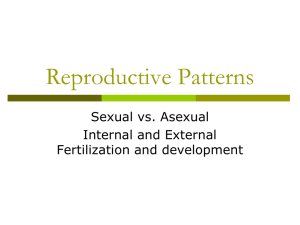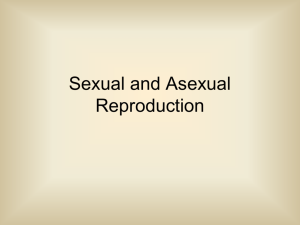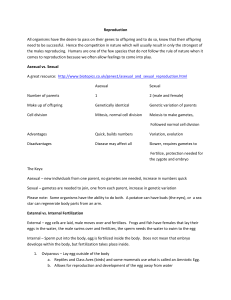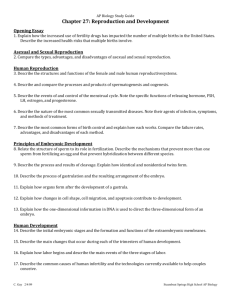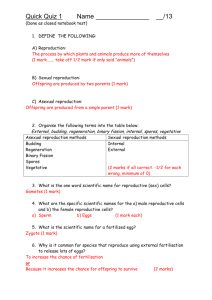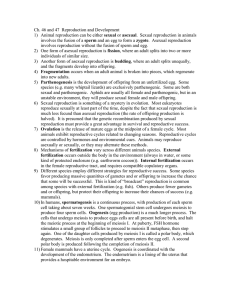Reproduction Notes:
advertisement
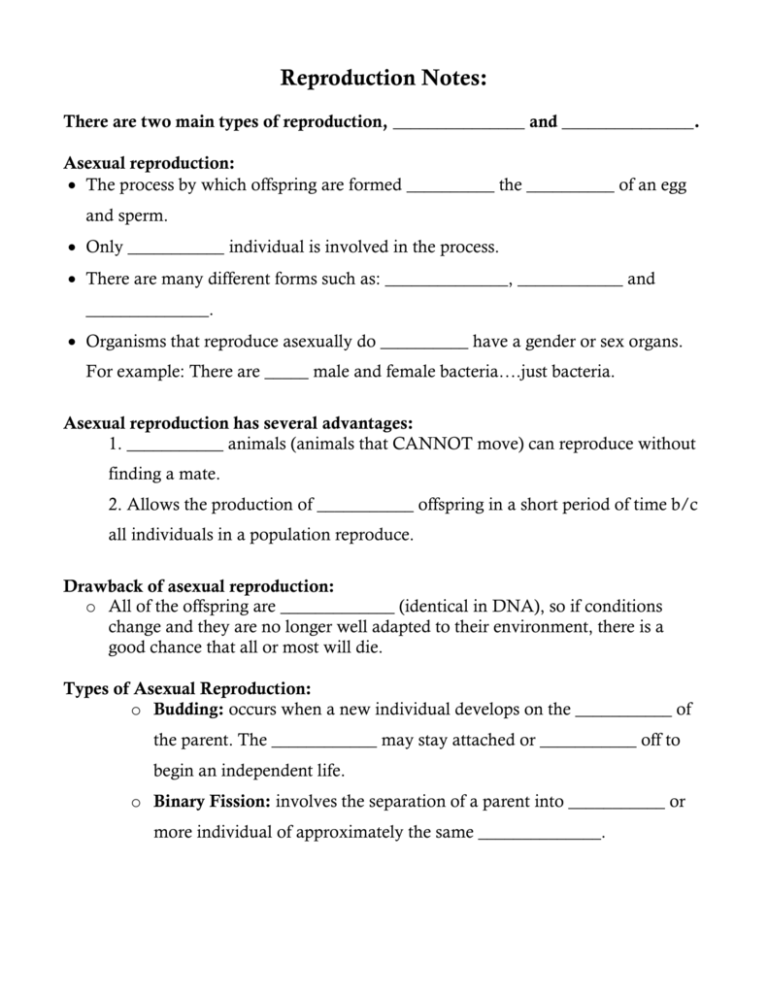
Reproduction Notes: There are two main types of reproduction, _______________ and _______________. Asexual reproduction: The process by which offspring are formed __________ the __________ of an egg and sperm. Only ___________ individual is involved in the process. There are many different forms such as: ______________, ____________ and ______________. Organisms that reproduce asexually do __________ have a gender or sex organs. For example: There are _____ male and female bacteria….just bacteria. Asexual reproduction has several advantages: 1. ___________ animals (animals that CANNOT move) can reproduce without finding a mate. 2. Allows the production of ___________ offspring in a short period of time b/c all individuals in a population reproduce. Drawback of asexual reproduction: o All of the offspring are _____________ (identical in DNA), so if conditions change and they are no longer well adapted to their environment, there is a good chance that all or most will die. Types of Asexual Reproduction: o Budding: occurs when a new individual develops on the ___________ of the parent. The ____________ may stay attached or ___________ off to begin an independent life. o Binary Fission: involves the separation of a parent into ___________ or more individual of approximately the same ______________. o Fragmentation or Regeneration: the ____________ apart of an organism into several pieces. Each piece re-grows (regenerates) the missing parts and develops into a new ______________. Sexual reproduction: o The process by which offspring are formed by the fusion of egg and sperm to form a diploid (contains ____ copies of each chromosome) ____________. o ______________ = fusion of egg and sperm o Offspring receive ___________ of their DNA from each parent. o Offspring are __________________ ______________. o This type of reproduction increases the genetic diversity of the species. It is ______________ in environments that are under constant stress. Drawbacks of sexual reproduction: Have to find a _________ Have to wait until sexual _________ Not all members of the population ____________ Major Mechanisms of Fertilization: External Fertilization: Eggs are shed into the _________________________ and fertilized by the male. Occurs in moist habitats where development can occur without the fear of__________________ _____________________ The process can occur without ________________________ between the parents. Chemical signals coordinate the process insuring the gametes are not ____________________. Internal Fertilization: Occurs when sperm are deposited in or near the __________________ reproductive tract and fertilization occurs __________________________ the female body. Requires a more ___________________________ reproductive system and cooperative mating behaviors. Embryo Development: o Embryos o Internal can develop _________________ or ________________. development means that the embryos develop ____________ the body of the mother. o In order for internal development to occur, there had to have been ____________ fertilization. o Animals that follow this development pattern are referred to as having “_________ _________”. o Embryos may also develop externally, or _____________ the body of the mother. o External development may happen after either ___________ or ______________ fertilization. Embryo Protection Externally produced embryos are protected in several ways: They may be covered with a __________________________________ which allows for free gas exchange with the environment and provide the embryo with moisture. _____________________ numbers of zygotes are produced to insure that some reach maturity. Internally produced embryos: May be protected by an egg shell, as in reptiles and birds. Some are ____________ and some are ____________. ___________________ mammals retain their offspring in a special structure called the uterus. Internally protected zygotes have a ___________ rate of survival, and therefore, fewer ____________ are produced.

